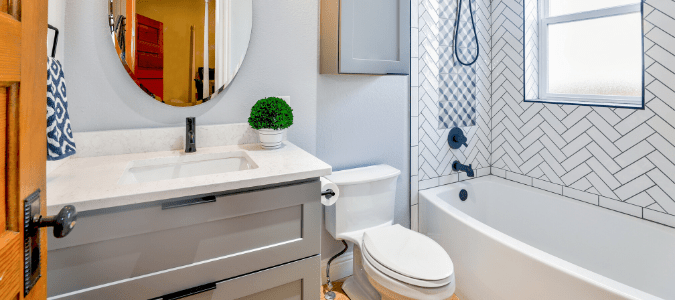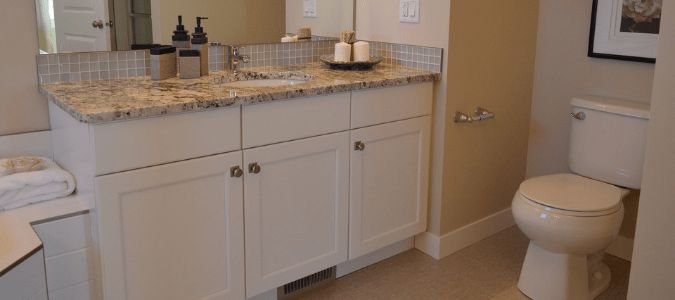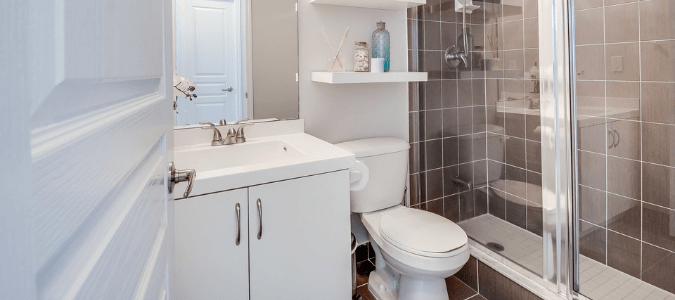There’s nothing more frustrating than using the toilet and realizing there’s barely any water in the bowl for flushing. That means there’s something wrong with it, and you have yet another thing to add to your to-do list.
Fortunately, troubleshooting this issue can be straightforward. And if things don’t work out, you can always count on a professional plumber to solve the problem.
How to Troubleshoot Low Water in the Toilet Bowl
Low water in the toilet bowl? Before assuming your toilet has a problem, check that the water supply is on. Also, see if someone had accidentally turned off the toilet’s shut-off valve. If these two things are fine, you can move on to these troubleshooting methods.
Broken Fill Valve or Flapper
The toilet fill valve is the most common culprit behind low water in the toilet bowl. This component controls how much water enters the tank. If it’s damaged or malfunctioning, the tank won’t receive the correct amount, explaining the insufficient water in the bowl.
If the fill valve is working as it should, the flapper might be to blame. This part allows water in the tank to drain into the bowl. If it’s broken, the bowl might not receive enough water.
Open the tank’s lid and check on the fill valve and flapper. Adjust the fill valve and see whether that fixes the issue. You can refer to the manufacturer’s manual since all models work differently. If that doesn’t work, you might have a broken flapper. You can go to the hardware store, purchase a replacement and install it yourself or have a professional do this task.
Partial or Full Clog
Most homeowners think a clog in the toilet system will cause the bowl to overflow. But it can also have the opposite effect. The blockage can siphon the water from the bowl, pulling it back so there’s barely any left.
You can confirm this by flushing the toilet. If the bowl fills almost to the brim with water and then empties until there’s nearly none left, there’s a blockage somewhere that’s producing the siphoning effect.
A toilet snake is one of the best tools for removing a toilet clog. It can reach down the drain and break up the blockage, allowing it to pass through the pipe. Toilet snakes are more effective than plungers and are less likely to cause damage. But if the clog is too far down the drain, let a professional plumber take over.
Blocked Inlet Holes
Inlet holes are under the toilet bowl’s lip. When you flush, these holes allow water to flow into the bowl from the tank. But if your tap water is hard, it can calcify around the inlet holes and clog them up. Fortunately, there’s an easy fix for this.
Heat some vinegar until it’s warm but not boiling, and pour it down the overflow tube. Let the vinegar sit inside for a few hours to do its magic. That will help break up the calcium deposits, making it easier for you to clean them up.
Take a toothbrush and scrub around the inlet holes. You can also use a wire or a similar tool to poke into the holes and clear the debris. Flush the toilet to see if the bowl fills with enough water.
Clogged Vent Pipes
Vent pipes allow sewer gases to exit the waste pipes and oxygen to enter them. If these parts are blocked, the toilet system will look for other sources of air, siphoning water from the bowl and making gurgling noises.
Vent pipe blockages usually occur on the roof. Leaves, branches and bird nests can enter the vent and cause a clog. Sometimes, even the wind can alter the pressure in the pipes, affecting your toilet’s water level.
Homeowners should never attempt to get up on the roof and remove the blockage themselves. It’s a dangerous task that you should leave to the pros. They will clear the clog and install a vent cover to prevent future issues.
Broken Fill Tube
The fill tube is a flexible hose that connects to the overflow tube. It’s responsible for managing the toilet’s water level. If it’s broken or clogged, it will prevent the tank from refilling, explaining the low water level in the bowl.
Additionally, if the fill tube has lost connection to the overflow tube, reattach it and see if that fixes the issue. If you’re dealing with a clogged or damaged fill tube, replacing it with a new one should do the trick.
Cracked Toilet Bowl
If the water level in your toilet bowl is low, and there’s water all over your bathroom floor, you likely have a cracked bowl. Inspect it for any visible damage. It’s time to replace it with a new one if it’s broken. However, it’s a task that is often too challenging for homeowners. Contact a plumber for professional assistance.
Float Ball Issue
The float ball dictates the correct water level inside the tank, preventing water from overflowing. But if the float ball is too low, there won’t be enough water to fill the tank and bowl. You can fix this by adjusting the float arm and pointing it upwards. That will allow more water to flow in.
There are several possible reasons for low water in the toilet bowl. While some fixes are simple, others require the expertise of a professional plumber. It’s better to let a licensed plumber handle it when in doubt.
What Causes a Toilet to Overflow?
It’s frustrating when the water in the toilet bowl is too low. But it’s just as annoying when there’s too much water that it overflows. When that happens, the water can seep into wooden cabinets and floorboards, encouraging mold and mildew to grow.
It’s essential to address an overflowing toilet bowl to prevent damage to your home. Here are the top causes behind this issue and how to troubleshoot them:
Clogged Drain
The most likely culprit behind an overflowing toilet is a clogged drain. And one of the most common reasons behind a clogged drain is too much toilet paper.
When you flush too much toilet paper, it forms lumps that block the drain line, preventing water from emptying the toilet bowl. That explains why the water backs up and overflows when you flush. Other items like sanitary napkins, paper towels and cotton balls can also clog the drain.
The best solution is to insert a toilet snake into the drain line. It will break up the clog or pull up whatever material is causing the blockage. If the clog is too far down, get a professional plumber to help.
Blocked Vent Pipes
Toilet drain lines are responsible for carrying waste to the sewers. Meanwhile, the vent pipes release the gases that the waste creates as it breaks down. They also introduce fresh air into the system, removing debris blocking the lines.
When the vent pipes aren’t functioning as they should, the toilet will act up and possibly overflow. Vent pipe issues are complex, so leave them to the capable hands of a pro. The plumber will clean them out for you using special equipment.
Wrong Filler Float Height
While clogged drains and vent pipes will cause the toilet bowl to overflow, the wrong filler float height will cause the water to flow out from the tank. Having the filler float too high will let in too much water, causing it to spill from the tank’s sides.
Fortunately, you can fix this problem by adjusting the filler float. Remove the tank’s lid and locate the screw that secures the float arm to the fill valve. With a screwdriver, rotate the screw clockwise. That will lower the water level inside the tank.
If you’ve tried these methods, but water still spills out from the toilet bowl or tank, it’s time to contact a professional plumber. The plumber will assess the situation, identify the cause of the issue and provide the best solution.
Toilet Backing Up Into Tub? Here’s What to Do
After a long day, there’s nothing more relaxing than taking a hot bath or shower. The last thing you want to see is dirty water from the toilet backing up into the tub. When this happens, it usually means there’s a clog in the main sewer line. The water and waste have nowhere else to go and will use the nearest hole to escape. In this case, it’s your tub drain.
Various things can clog or damage the main sewer line, including flushable wipes, grease, tree roots and soil damage. Here are some at-home remedies you can try.
- Pour a mixture of hot water and dish soap down the drain to help melt oil and grease.
- A toilet snake can reach down the drain and break up or extract blockages.
- A combination of vinegar and baking soda will create a foaming action that helps clear clogs.
The main sewer line has a more severe issue if these DIY methods don’t work. Let a professional plumber figure it out.
Turn to the Pros for Your Toilet Woes
Homeowners have limited skills and tools to fix toilet issues. Seek professional help if you can’t decipher what’s wrong with yours. Licensed plumbers have the equipment and expertise to get your toilet up and running again.
ABC Can Help With Your Toilet Problems
When dealing with plumbing problems, it’s not worth making a mess yourself. Instead of trying to learn the ins and outs of plumbing, contact ABC Home & Commercial Services. Our licensed professionals can efficiently diagnose and repair any plumbing issue you may have. In cases where a repair isn’t possible, we can help you decide which type of toilet works best for you and then install it.



